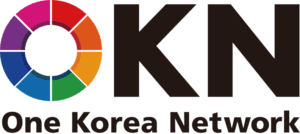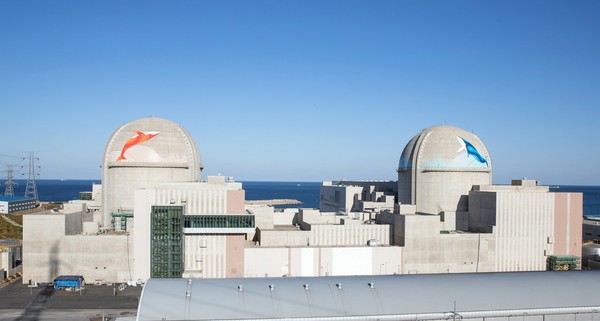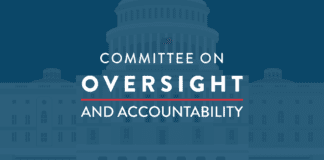This article was originally published on the Maeil Business Newspaper and translated by OKN Correspondent.
The CEOs of Westinghouse Electric Company, a U.S. nuclear power firm with the world’s best nuclear power source technology, is visiting South Korea. The visit was a follow-up on the Korea-U.S. summit last month between President Yoon Suk-yeol and U.S. President Joe Biden, which called for an alliance between the two countries in the nuclear power sector. According to the Maeil Business newspaper’s investigation, the CEOs from Westinghouse will visit South Korea for two days starting on June 8 and will have closed-door meetings with Korea Electric Power Corporation (KEPCO), Korea Hydro & Nuclear Power (KHNP), KEPCO Korea Plant Service & Engineering (KEPCO KPS), and the Ministry of Trade, Industry and Energy.
The meetings were arranged to find ways for the two countries to export nuclear energy. Specifically, the CEOs from Westinghouse will meet their counterparts from KEPCO and KEPCO KPS on June 8 and their counterparts from KHNP and subject matter experts on June 9 to discuss ways to expand their cooperation in business and technology-related matters.
The Westinghouse executives, including CEO Patrick Fragman, Asia Region president Gavin Liu and regional vice president Jung Kim, are scheduled to hold meetings. The visit by the Westinghouse CEO is the first since May 2019, when then-CEO Jose Emeterio Gutierrez visited Jeju to attend an annual atomic power conference.
In the wake of an unusual visit to Korea by a key U.S. nuclear power company, the building of the “world’s strongest nuclear energy country” declared by the Yoon Suk-yeol administration and exports of nuclear power plants are also expected to gain momentum. In particular, expectations are high that a bridge will be set up for joint exports of nuclear power plants by South Korea and the United States to the Czech Republic, Poland, and Saudi Arabia.
However, some analysts say that the discussion might not just focus only on cooperation at face value. Westinghouse is known to prefer joint exports in the form of acquiring projects on its own and entrusting minor parts of those projects, such as construction and supply chains, to South Korea. “As Westinghouse is likely to take the lead in joint exports, given that it has raised intellectual property rights issues related to APR-1400 nuclear power plants in South Korea, appropriate negotiations should be made to protect national interests,” said Joo Han-kyu, a professor of nuclear engineering at Seoul National University.
Will the spring of nuclear power exports come back? Cooperation expedited with U.S. design and Korean construction technology
There are many positive assessments about the visit by executives of the U.S. Westinghouse Electric Company to South Korea. As the leaders of South Korea and the United States called for a “nuclear power alliance” at their recent summit, this is widely expected to signal global joint exports in a large framework. However, it is also believed that fierce negotiations are expected over joint export initiatives. This is because Westinghouse is likely to demand joint experts centered on its AP-1000 reactor design, which is competitive with APR-1400, Korea’s main export product.
According to the nuclear power industry on June 7, cooperation between Westinghouse and Korea Electric Power Corporation (KEPCO), Korea Hydro & Nuclear Power (KHNP) leaves plenty of room for win-win results. Established in 1886, Westinghouse is a global nuclear power plant company that provided nuclear reactors and engineering source technology to more than half of the world’s nuclear power plants. Kori-1, South Korea’s first commercial nuclear power plant, was also built with the technology of Westinghouse.
It is a representative U.S. nuclear power plant company but its current status is not the same as before. This is because the foundation of the nuclear industry in the United States collapsed as the country minimized the construction of new nuclear power plants after the 1979 Three Mile Island nuclear incident. Since then, it continued to remain in the business by focusing on overseas projects, but was sold to Toshiba Japan in 2006 and filed for bankruptcy protection in 2017. Since then, it was sold to Canadian private equity fund Brookfield Business Partners in 2018, but withdrew from new construction projects to secure profitability. It lost its experience and ability to build new nuclear power plants through a series of processes.
The nuclear industry believes that Korean companies will be able to create synergy by combining their know-how in constructing and operating nuclear power plants. It is expected that Korea’s technology and experience will show their strength in three key areas: the core code for nuclear power plant design, reactor coolant pumps, and nuclear instrument control systems, as well as test runs before commercial operation with nuclear fuel loaded.
However, if the center of gravity is too focused on Westinghouse, it will be difficult to export nuclear power plants independently, which the Korean government, KEPCO, and KHNP are focusing on. In fact, Westinghouse, and KEPCO and KHNP are competing for new nuclear power plants in Eastern Europe, such as in the Czech Republic and Poland. Analysts say that Westinghouse’s sudden visit is not pleasant at a time when competition between the two will occur before they agree to cooperate. Westinghouse is raising the issue of intellectual property rights to the source technology over the Korean light water reactor design APR-1400 developed by South Korea. Attention is also focused on whether there will be clues to the solution to the intellectual property issue during the visit.
However, some point out that it is not a good idea to stick to only Korea-led exports of nuclear power plants, as the local nuclear industry has been virtually dead for the past five years due to the Moon Jae-in government’s policy of drifting away from using nuclear power. “In order to revive the nuclear power ecosystem and maintain export competitiveness, we need to take a multi-faceted approach that provides our equipment and construction capabilities strategically, while not giving up exporting our whole nuclear power plants independently,” said Jeong Beom-jin, a professor of nuclear engineering at Kyung Hee University.
The Yoon government is targeting the export of 10 nuclear power plants by 2030. Korea is currently involved in various overseas projects that are led mostly by KEPCO and KHNP. South Korea is actively targeting major countries in Europe and the Middle East by emphasizing its successful operation experience and superior price competitiveness compared to competitors at the Barakah Nuclear Power Plants in the United Arab Emirates. This was South Korea’s first nuclear plant export, which occurred in 2009. KEPCO is also focusing on winning orders for new nuclear power plants that the United Kingdom plans to construct. Earlier, British Prime Minister Boris Johnson announced plans to build eight new nuclear power plants by 2050 for energy security. KEPCO also visited the British Department for Business, Energy and Industrial Strategy and held negotiations between working-level officials.
South Korea is currently bidding on nuclear projects in Saudi Arabia. Saudi Arabia is planning on building two nuclear power plants with 1.4GW capacity. However, industry watchers say that KEPCO-led biddings are not likely to win in reality as it needs to obtain permission from the United States, which has the source technology, for Saudi exports.
KHNP is focusing on winning nuclear power projects in Eastern European countries. In April, KHNP decided to participate in the construction of six light water reactors with 6 to 9GW capacity in Lubiatowo and Kopalino in Poland, and submitted a business proposal. It also decided to participate in the order for one 1.2GW nuclear power plant project in Dukovany in the Czech Republic. In March, a bid was offered to South Korea, the United States and France. KHNP plans to submit a bid to the Czech Republic in November.
KHNP also bid for a contract for the procurement of equipment and materials and the construction of the main and auxiliary buildings and structures of four units (1.2GW) under construction in El Dabba in Egypt. It was selected as the sole bidder for the construction in December and is currently discussing detailed contract terms. KHNP explained that it will sign a contract as early as the first half of this year. According to the World Nuclear Association (WNA), as of last month, 39 nuclear power plants are under construction or are being discussed in Europe, excluding Russia.
Along with the expansion of nuclear exports, the Yoon Suk-yeol administration’s plan to revise the previous administration’s nuclear phase-out policy is also proceeding smoothly. The Ministry of Trade, Industry and Energy is planning to announce the new government’s energy policy direction next month, which will comprehensively consider state affairs such as expanding nuclear power plants. The new government’s first energy policy is expected to include adjusting the speed of new and renewable energy. The trade ministry will hold a public hearing on June 21 to collect public opinion on this matter.



